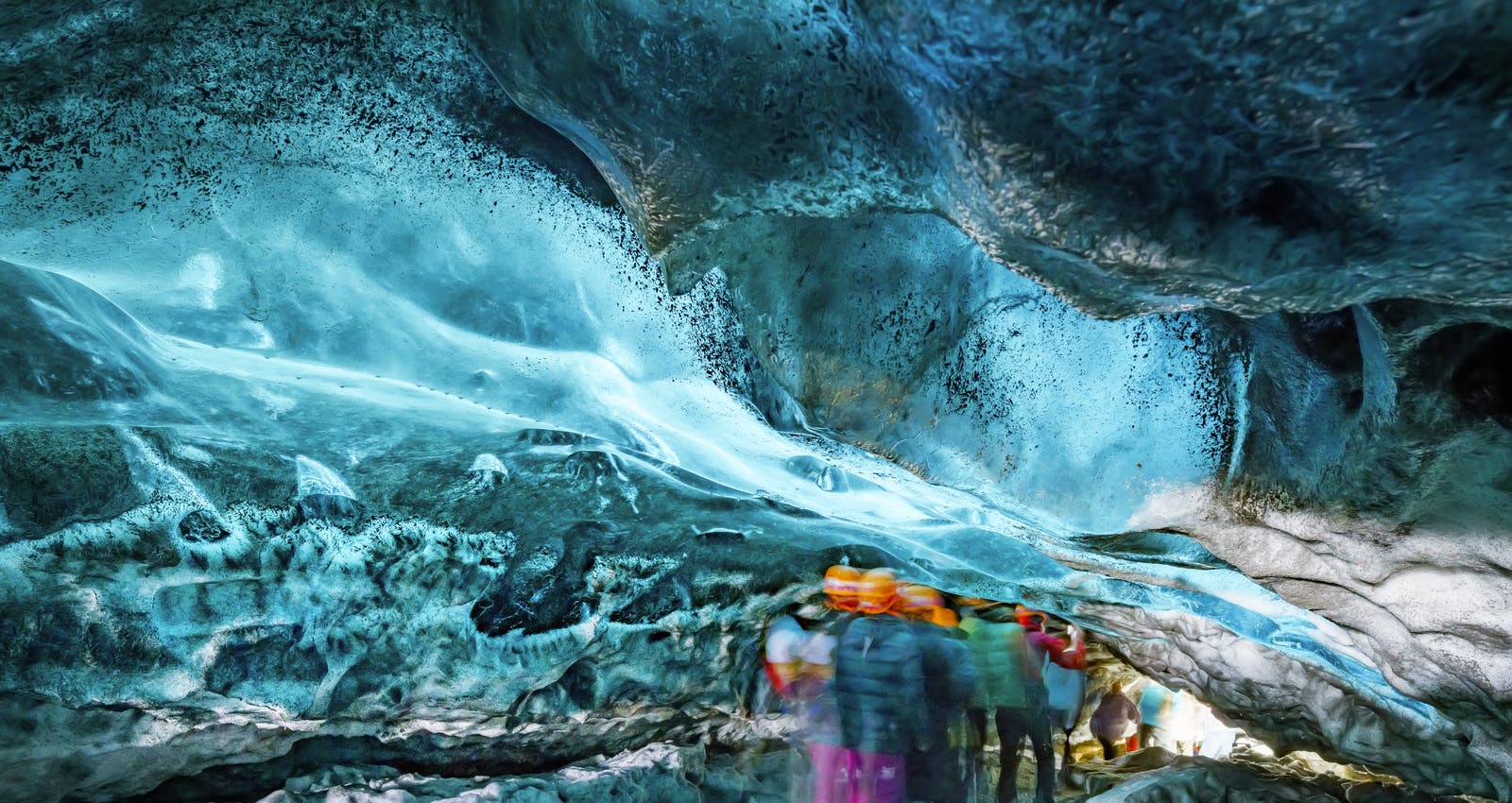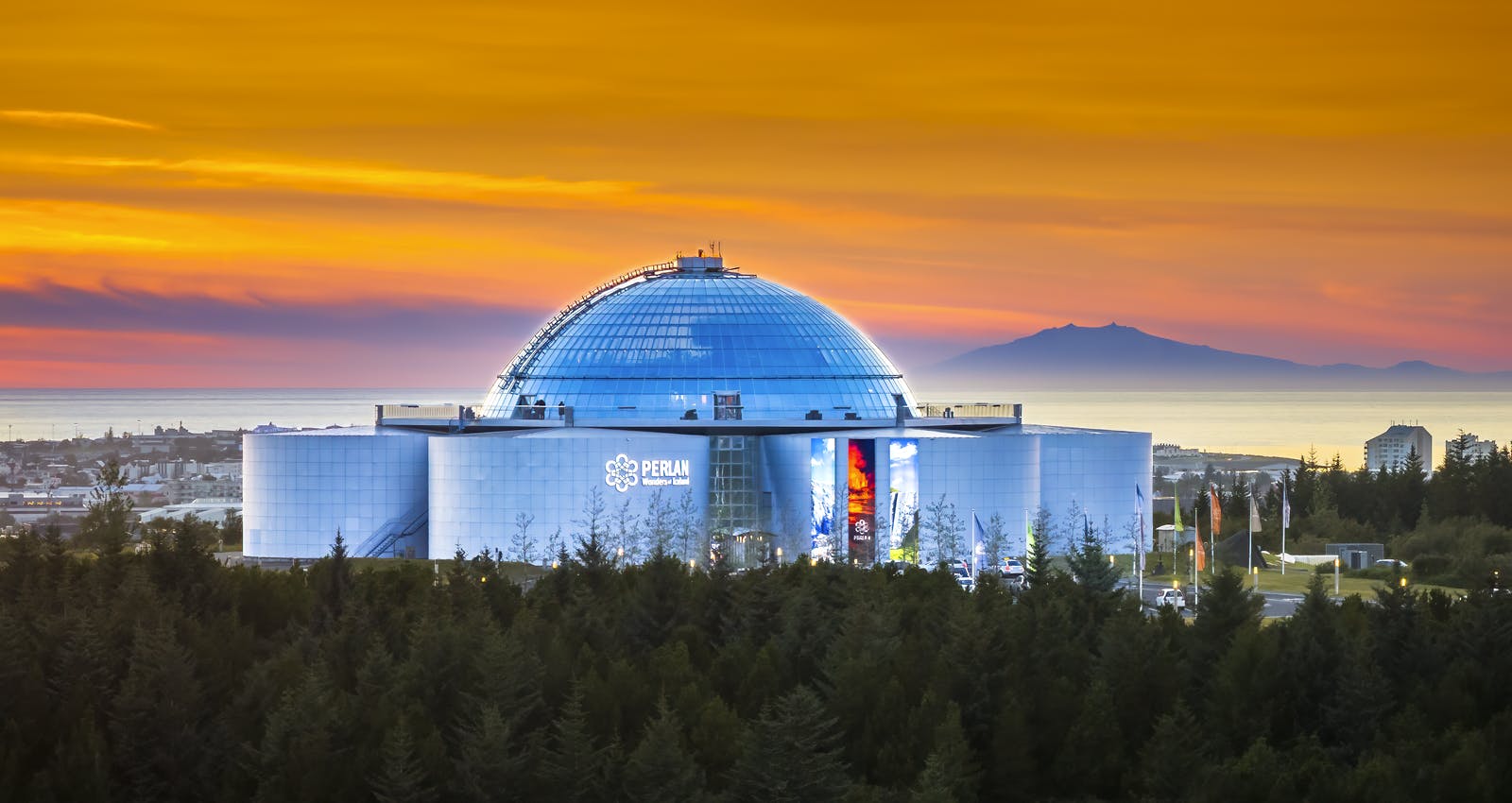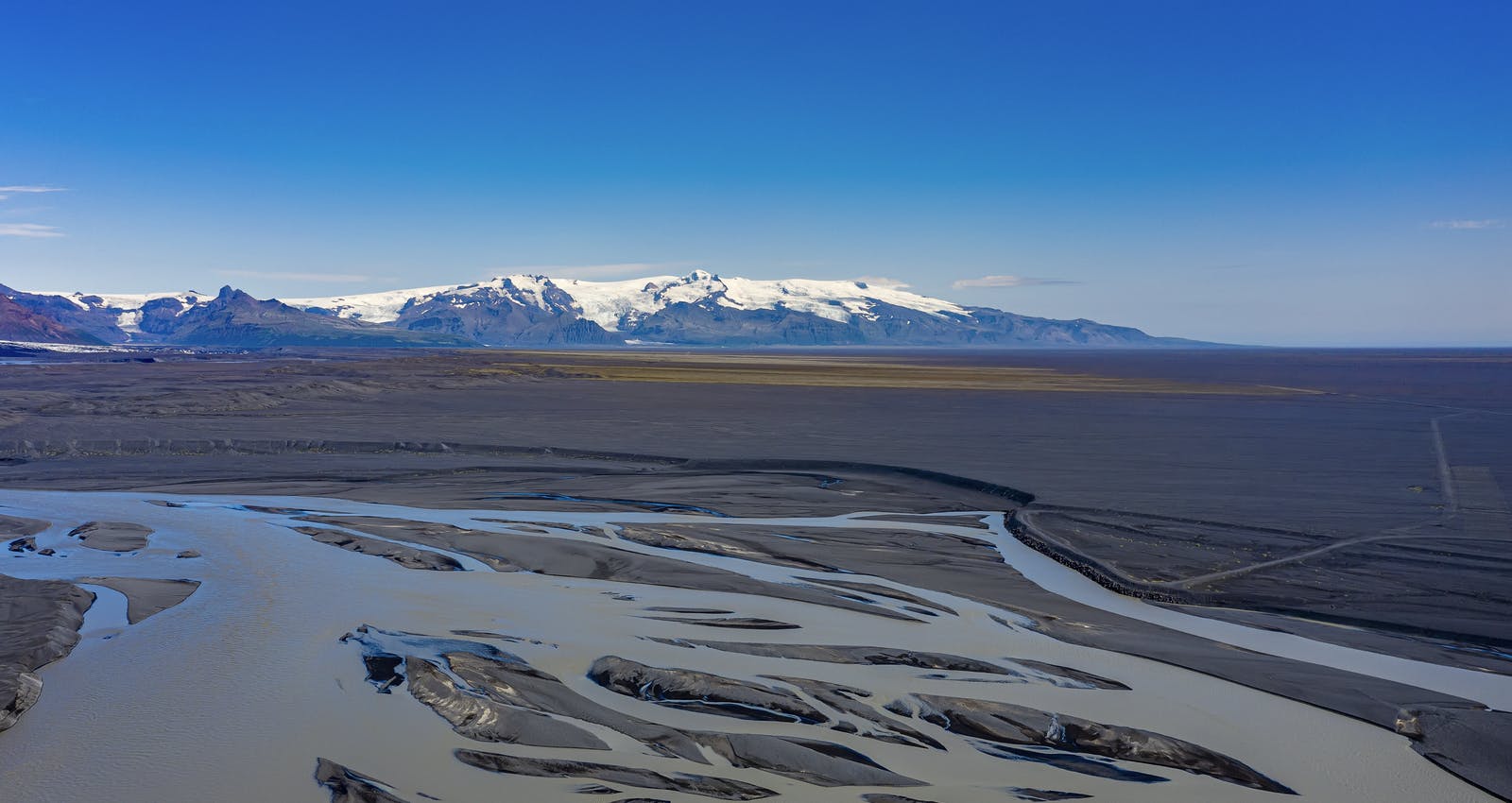
Vatnajökull National Park
Vatnajökull National Park is one of Iceland’s most diverse and beautiful protected regions, covering nearly 7% of Iceland’s landmass. The park was established in 2008 and is named after Vatnajökull, Europe’s largest glacier by volume and one of Iceland’s most remarkable natural features.
What Can you See at Vatnajökull National Park?
The glacial landscape takes centre stage at Vatnajökull National Park, with numerous outlet glaciers, looming ice formations and mighty ice caps. Tourists visit the park to enjoy outdoor activities like snowmobiling tours, glacier hikes, ice cave visits and ice climbing.
Why is Vatnajökull National Park Special?
The park is home to an incredibly diverse landscape, including glaciers, volcanic peaks, bubbling geothermal areas, vast lava fields, deep canyons, roaring rivers, and expansive valleys. The combination of its natural beauty and the opportunity for tours makes it a very popular region.
How Was Vatnajökull Formed?

Vatnajökull glacier has been shaped by geological events over thousands of years. Its formation began. Its formation began when the retreating ice-sheet of the Ice Age began to break into smaller ice caps in the Central Highlands of Iceland some 10,000 years ago. Since then it has been the largest one of Iceland's glaciers, advancing in cold periods and retreating in warm periods.
The weight and pressure of the ice caused it to flow and spread, carving out valleys and shaping the landscape beneath it. As the ice moved, it smoothed and sculpted the underlying terrain, creating distinct features like U-shaped valleys and glacially carved landforms.
What Kind of Glacier is Vatnajökull?

Vatnajökull is classified as an ice-cap glacier, an ice mass covering entire landscapes and often characterised by its relatively flat surfaces. Ice-cap glaciers, like Vatnajökull, form in polar or high-altitude regions where snow accumulation exceeds melting, leading to the gradual buildup of ice over time. These glaciers are dynamic systems, constantly in motion as ice flows outward under its own weight.
Furthermore, Vatnajökull has numerous outlet glaciers that stretch from its centre, flowing down valleys and carving the surrounding landscape. These outlet glaciers are responsible for some of the breathtaking features of the area, such as glacier tongues, ice caves, and stunning ice formations, including the Jökulsárlón Glacier Lagoon.
What Activities Can You Do at Vatnajökull National Park?
The glacier is ideal for adventurers and nature enthusiasts who want to explore ice caves and take glacier walks on guided tours. The glacial meltwater feeds into several rivers, contributing to the stunning waterfalls of Iceland, including the famous Jökulsárlón glacier lagoon, where icebergs break off and float towards the sea.
Vatnajökull is not just a natural wonder but a dynamic ecosystem, home to various species of birds and wildlife that thrive in this harsh but beautiful environment. Protecting this glacier and its surroundings is of utmost importance as it plays a crucial role in Iceland’s landscape and ecological balance.
Does Vatnajökull Have Natural Ice Caves?

Vatnajökull harbours some of Iceland’s most spectacular ice caves. These ice caves form as a result of the glacier’s movement and the melting and refreezing of ice. They can vary in size, shape, and accessibility from year to year. New caves form every year.
The ice caves within Vatnajökull are renowned for their stunning blue hues, caused by the compression of ice over hundreds of years, which absorbs most colours of the spectrum except blue. This phenomenon creates an otherworldly and mesmerising atmosphere inside the caves.
Exploring these ice caves is a popular activity among tourists. However, access to them can be seasonal and dependent on various factors, including safety considerations due to the glacier’s constantly changing nature. Visitors must explore the caves with experienced guides who are familiar with the area’s conditions and can lead safe and informative tours.
Each ice cave within Vatnajökull offers a unique experience, with intricate ice formations, tunnels, and breathtaking blue ice walls that captivate the imagination. However, it’s important to note that due to the dynamic nature of glaciers, the accessibility and conditions of these ice caves can change significantly from one year to the next.
Where Can I Learn About Glaciers in Reykjavík?

Perlan’s Wonders of Iceland exhibition features an ice cave that is 100 metres long and made from more than 350 tonnes of snow from Icelandic mountains. Ice caves are a natural phenomenon that takes shape in the deep winter months within glaciers. Meltwater streams carve these fantastic caves, and at Perlan, guests can see a real ice cave in a safe and secure environment. A visit to an ice cave is a magical experience that no one who comes to Iceland should miss, and Perlan offers year-round travellers a chance to get a sense of this unique natural phenomenon.
At Perlan, guests can explore Iceland’s’ natural wonders through a series of exhibits and immersive presentations, including ice caves and glaciers, as well as northern lights and volcanoes.
FAQ

What geological processes are responsible for the formation of Vatnajökull glacier?
Vatnajökull glacier, the largest in Europe, was formed through long-term accumulation and compression of snowfall, influenced by Iceland's unique geology. The island's location on the Mid-Atlantic Ridge means it is affected by volcanic activity and tectonic movements, contributing to the glacier's dynamic landscape of ice caves, volcanic craters, and hot springs beneath the ice.
How far is Vatnajökull National Park from Reykjavík?
The park is located in the southeastern region of Iceland, and it’s quite a distance from Reykjavík, which is in the southwest. The distance between Reykjavík and Vatnajökull National Park is roughly 435 kilometres on the Ring Road. Driving from Reykjavík to the park typically takes around 4.5 to 6.5 hours, depending on your starting point in Reykjavik, road conditions, weather, and any stops made along the way.
How is climate change affecting the Vatnajökull glacier within the park?
Climate change is significantly impacting the Vatnajökull glacier, primarily through accelerated melting. Rising global temperatures have led to a decrease in the glacier's mass and size over recent years. During the last 100 years it has lost some 400 km2 of ice (it was 8100 km2 but is now 7700 km2). This melting contributes to sea-level rise and alters the landscape of the park, affecting its ecosystems and geological features. Scientists study these changes to understand the broader impacts of climate change on glacial environments.
What role do the subglacial volcanoes play in Vatnajökull National Park's geology?
The subglacial volcanoes under Vatnajökull are crucial in the park's geology. These volcanoes, including Grímsvötn and Bárðarbunga, are active and contribute to the formation of unique features like ice caves and hot springs. Volcanic eruptions under the ice can lead to jökulhlaups (glacial outburst floods), significantly reshaping the landscape. Studying these volcanoes helps scientists understand the interactions between ice and volcanic activity.







